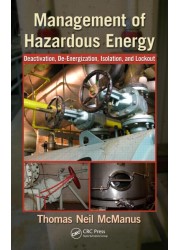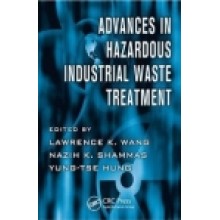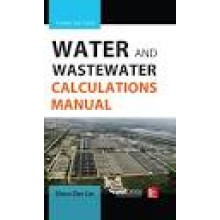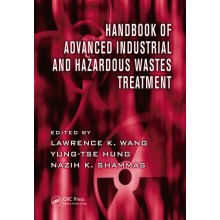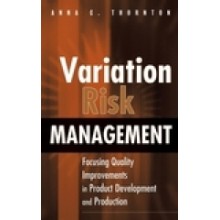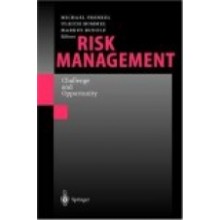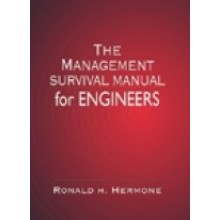Your shopping cart is empty!
Welcome visitor you can login or create an account
Management of Hazardous Energy: Deactivation, De-Energization, Isolation, and Lockout
Our Price: £80.00
Quantity:
-
Add to Compare
Description
Hazardous energy present in systems, machines, and equipment has injured, maimed, and killed many workers. One serious injury can stop the growth of your business in its tracks. Management of Hazardous Energy: Deactivation, De-Energization, Isolation, and Lockout provides the practical tools needed to assess hazardous energy in equipment, machines, and systems, and covers how to manage hazardous energy through elimination or control in order to ensure worker safety and regulatory compliance.
Written in plain English with a minimum of jargon, this book provides safety professionals with the knowledge they need to interact with specialists, designers, and engineers to ensure that appropriate and necessary protocols and safety practices and tools are put into place for assessing the dangers and steps taken to eliminate or control exposure to hazardous energy when needed. Approaching the subject from the bottom up, the author starts at the workplace level, to ensure that the right actions happen for the right reasons.
The book explains a protocol for describing the flow of energy, including transformation and/or storage; for capturing the logic of decisions about control, including failure analysis and contingency planning; and ultimately for creating procedures that are technically sound and defensible. Creating simple procedures for ensuring worker safety and regulatory compliance, the book offers US and international strategies for hazardous energy management and contains examples to illustrate the application of concepts to specific areas.
Features
Written in plain English with a minimum of jargon, this book provides safety professionals with the knowledge they need to interact with specialists, designers, and engineers to ensure that appropriate and necessary protocols and safety practices and tools are put into place for assessing the dangers and steps taken to eliminate or control exposure to hazardous energy when needed. Approaching the subject from the bottom up, the author starts at the workplace level, to ensure that the right actions happen for the right reasons.
The book explains a protocol for describing the flow of energy, including transformation and/or storage; for capturing the logic of decisions about control, including failure analysis and contingency planning; and ultimately for creating procedures that are technically sound and defensible. Creating simple procedures for ensuring worker safety and regulatory compliance, the book offers US and international strategies for hazardous energy management and contains examples to illustrate the application of concepts to specific areas.
Features
- Identifies contributory factors, including previously unrecognized ones, in accidents involving hazardous energy
- Explains the effects of hazardous energy on humans
- Details the critical role of human factors, including limitations of information processing, in accidents involving hazardous energy
- Provides practical strategies for assessing and managing hazardous energy in equipment, machines and systems through deactivation, de-energiz-ation, isolation and lockout
- Discusses strategies contained in US and international standards
- Elucidates the application of concepts to specific areas of hazardous energy including, mechanical, electrical, hydraulic, pneumatic, and vacuum systems, process liquids and gases, and flowable solid materials
Contents
Chapter 1: Hazardous Energy and Fatal Accidents
Chapter 2: Occurrence of Hazardous Energy
Chapter 3: Biological Effects of Hazardous Energy
Chapter 4: Human Factors and Hazardous Energy
Chapter 5: Hazardous Energy and Operating Systems
Chapter 6: Integration and Control in Systems
Chapter 7: Management of Hazardous Energy in Systems
Chapter 8: Technical Aspects and Issues
Chapter 9: Management and Administrative Issues
Appendix A: Consensus Standards and Regulations
Appendix B: Standards Issues
Appendix C: Expression of Control
Appendix D: The Qualified Person
Appendix E: Model Hazardous Energy Control Program
Appendix F: Electrical Systems
Appendix G: Mechanical Systems
Appendix H: Fluid Power, Vacuum and Water Jetting Systems
Appendix I: Fluid-Handling Systems
Appendix J: Flowable Solid Materials
Index
Chapter 2: Occurrence of Hazardous Energy
Chapter 3: Biological Effects of Hazardous Energy
Chapter 4: Human Factors and Hazardous Energy
Chapter 5: Hazardous Energy and Operating Systems
Chapter 6: Integration and Control in Systems
Chapter 7: Management of Hazardous Energy in Systems
Chapter 8: Technical Aspects and Issues
Chapter 9: Management and Administrative Issues
Appendix A: Consensus Standards and Regulations
Appendix B: Standards Issues
Appendix C: Expression of Control
Appendix D: The Qualified Person
Appendix E: Model Hazardous Energy Control Program
Appendix F: Electrical Systems
Appendix G: Mechanical Systems
Appendix H: Fluid Power, Vacuum and Water Jetting Systems
Appendix I: Fluid-Handling Systems
Appendix J: Flowable Solid Materials
Index
Write a review
Your Name:Your Review: Note: HTML is not translated!
Rating: Bad Good
Enter the code in the box below:
Price subject to change without notice
Copyright © 2014 Engineering Standards Bureau. All Rights Reserved.
Developed By Zoom Into Web
Copyright © 2014 Engineering Standards Bureau. All Rights Reserved.
Developed By Zoom Into Web


